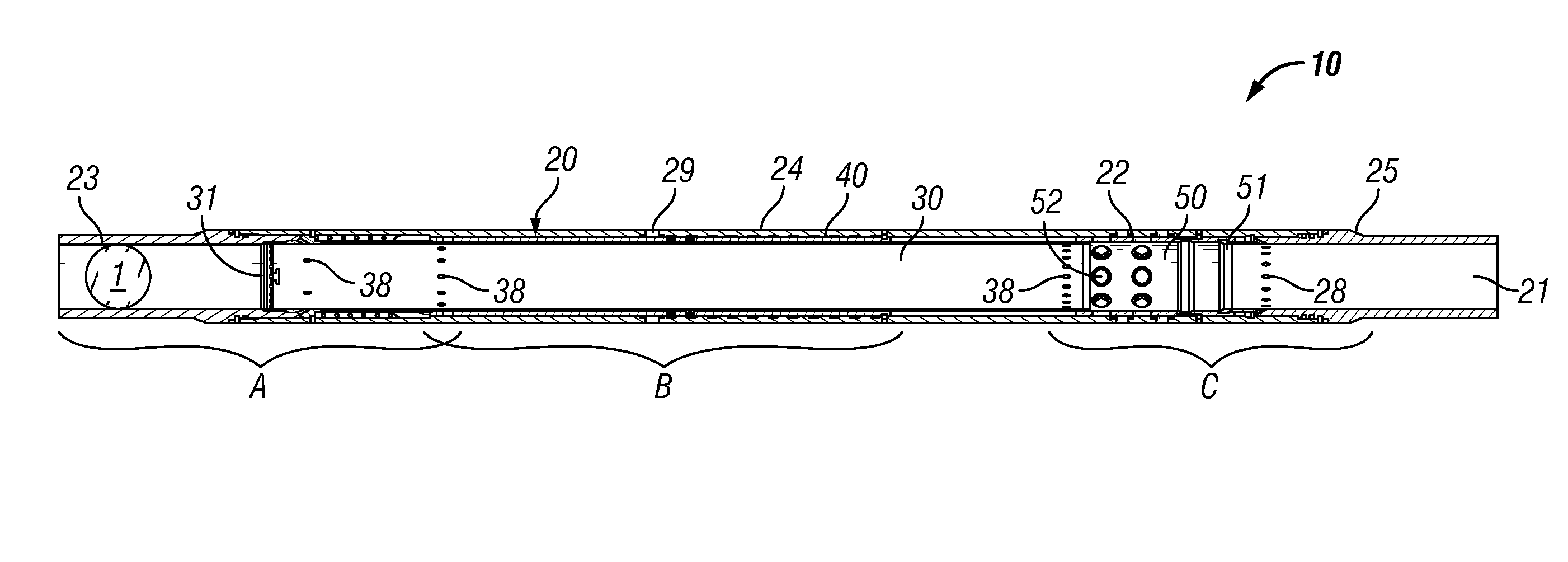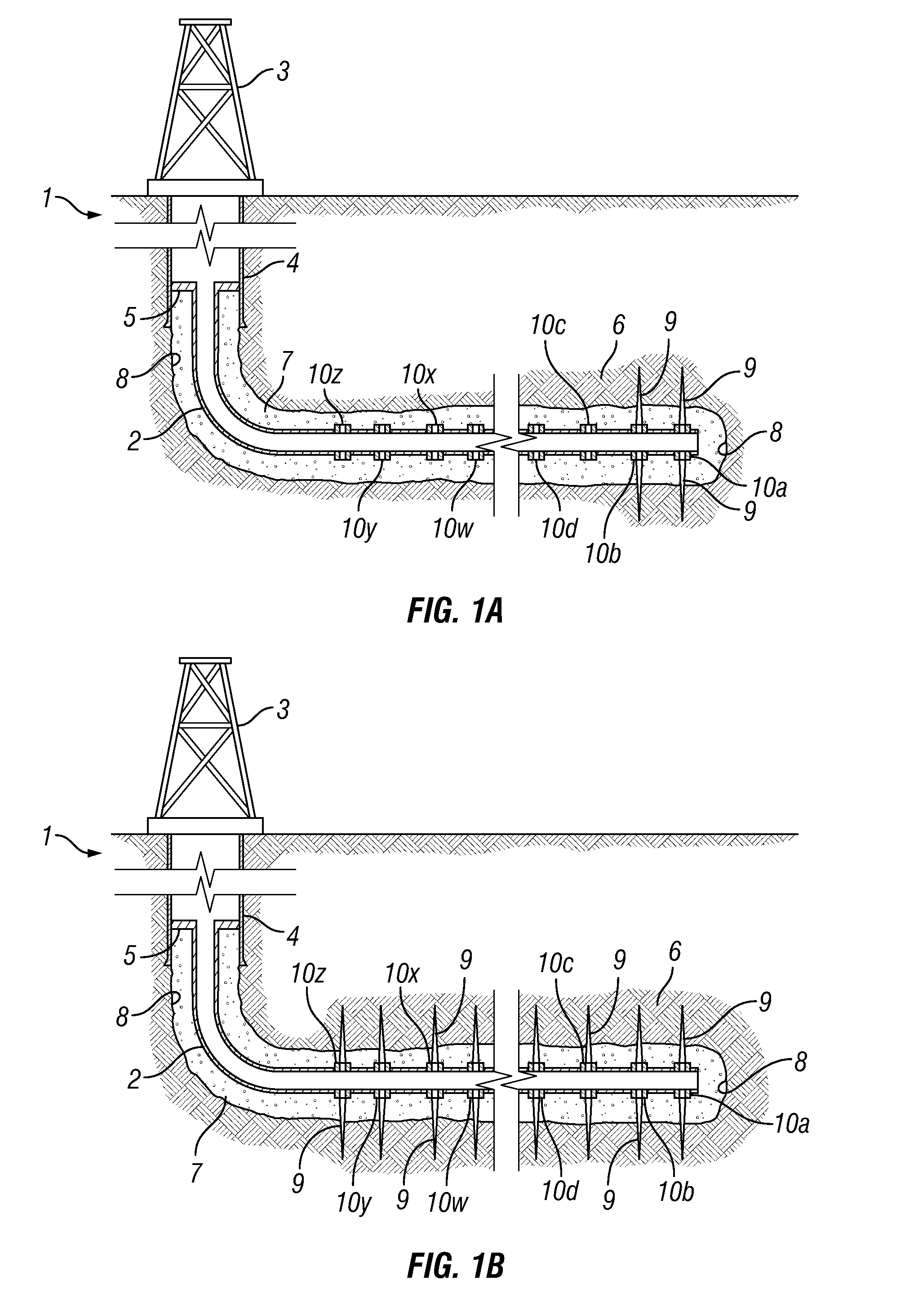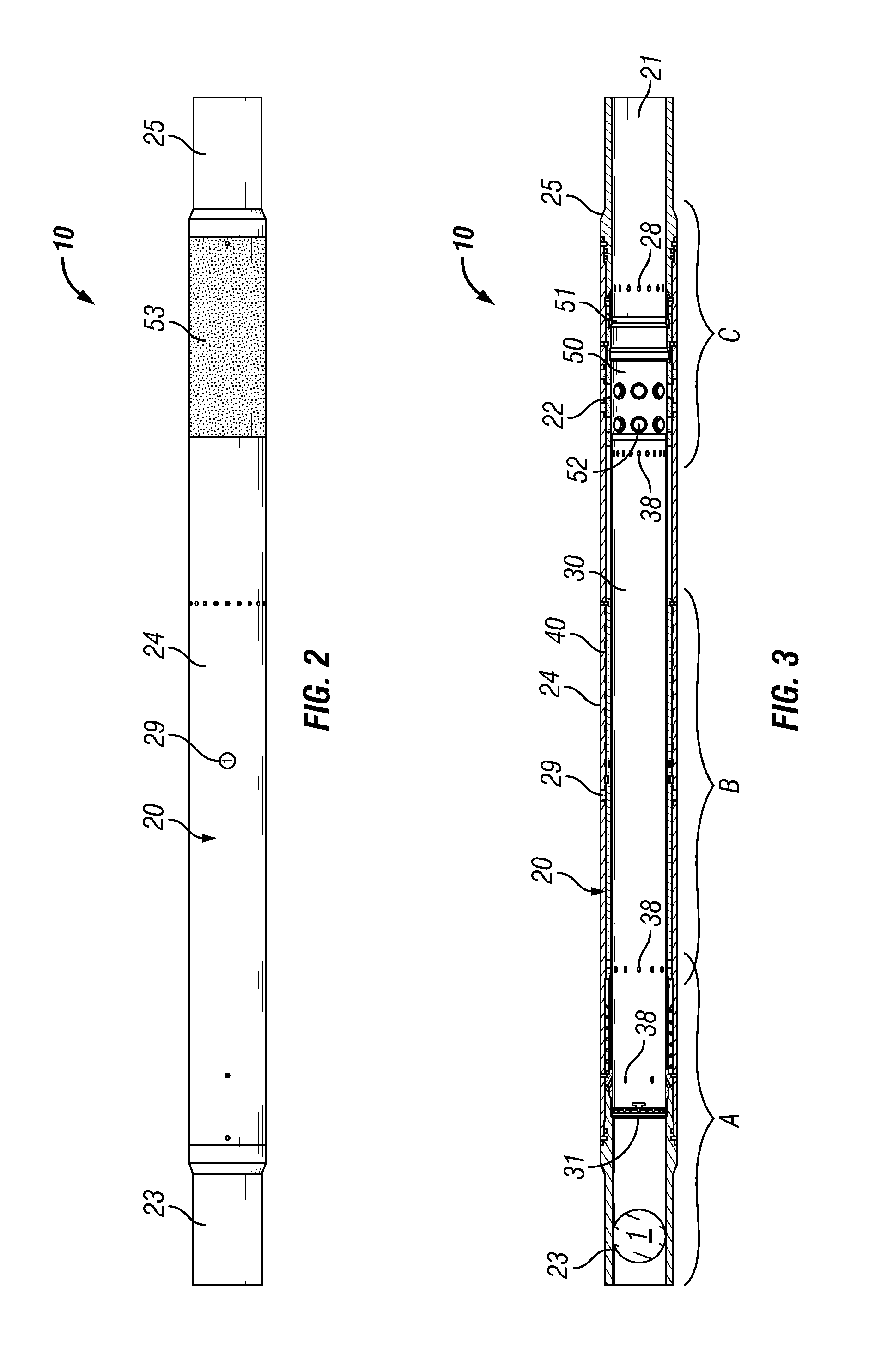This simplified drilling and completion process, however, is rarely possible in the real world.
Hydrocarbon bearing formations may be quite deep or otherwise difficult to access.
Moreover, hydrocarbons are not always able to flow easily from a formation to a well.
Other formations, however, such as shale rock, limestone, and
coal beds, are only minimally porous.
The formation may contain large quantities of hydrocarbons, but production through a conventional well may not be commercially practical because hydrocarbons flow though the formation and collect in the well at very low rates.
Fluid, most commonly water, then is pumped into the well and forced into the formation at
high pressure and flow rates, causing the formation to fracture and creating flow paths to the well.
Certain problems arise, however, when an
open hole is fractured.
Greater control may be obtained by increasing the number of packers and diminishing their separation, but that increases the time required to complete the frac job.
Moreover, even if packers are tightly spaced, given the extreme pressures required to fracture some formations and the rough and sometimes frangible surface of a well bore, it may be difficult to achieve an effective seal with a packer.
Thus, fluid may flow across a packer and fracture a formation in areas outside the intended zone.
Packers seat against a relatively small portion of the well bore, and even if an effective seal is established initially, packers may deteriorate as time passes.
The perf guns and plugs must be run into the well and operated individually, often times at great distance and with some difficulty.
Unlike plug and perf jobs, there also is a practical limit to the number of stages or zones that can be fractured.
As a practical, matter, such systems suffer from a number of flaws.
The hydraulic lines running between the valves are susceptible to damage as the liner is run into the well.
If a hydraulic line is punctured or severed, all valves uphole from the severed line cannot be actuated, as fluid no longer may be diverted from downhole valves to place them in a state to catch a ball.
The travelling
collet, however, is not configured to index down multiple units.
For example, when a ball is pumped down a production liner, especially if the ball is relatively large, it will
impact a ball seat with considerable force.
If that happens, the valve may be opened too soon and a downstream valve may never be opened.
Rotating, angularly indexing drivers utilizing pins and keyways, however, are susceptible to jamming, especially when a valve is run into a horizontal well bore.
Torque and friction can be created around the driver that may interfere with its operation.
Conventional valves, of both the linearly indexing and angularly indexing designs, also often are poorly suited for incorporation into a liner that will be cemented in place prior to fracturing the formation.
Cement passing through the valve conduit when the casing is cemented may hang up in the valve and interfere with subsequent operation of the sleeve or travel of the driver.
In addition, many such designs create restrictions through the bore that may undesirably limit the flow of production fluids from the formation to the surface.
A problem can arise, however, if pumping is interrupted for any reason after the ports have been opened, but before fracturing of the formation is completed.
An operator, therefore, will no longer have the ability to selectively fracture the formation adjacent the valve.
 Login to View More
Login to View More  Login to View More
Login to View More 


